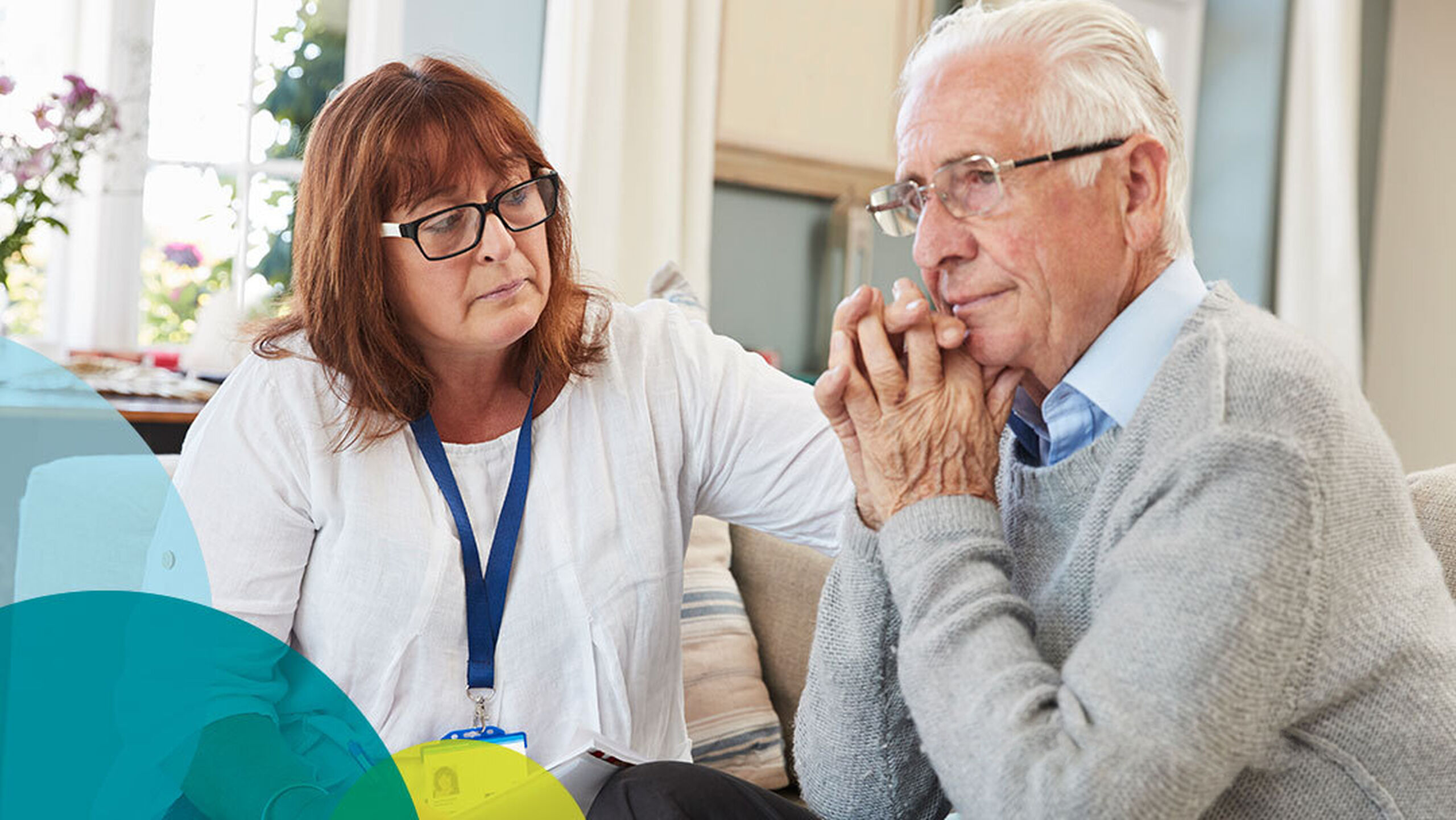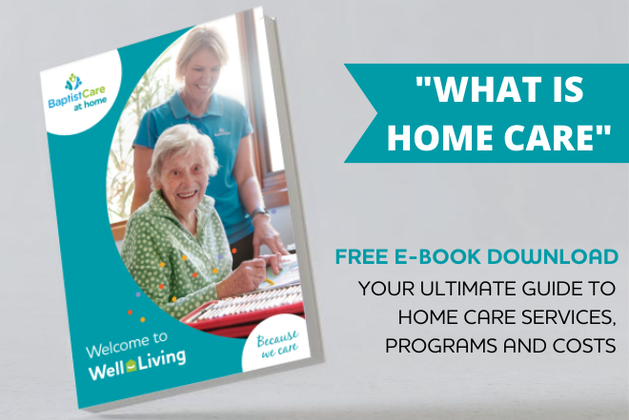Using technology to detect wandering behaviour
Technology can be used to detect wandering behaviour, or to find a person who has wandered and become lost.
Scroll to Explore

07 June 2022
Stories
| Home Care
Technology can be used to detect wandering behaviour, or to find a person who has wandered and become lost. Below are some suggestions on assistive technology and environmental adaptations that can support the independence and safety of a person living with dementia, and give peace of mind to their loved ones.
A person with dementia may feel compelled to walk about or wander. This can be worrying for the carer and may even put the person at risk. There are many reasons why a person may wander, such as to relieve agitation, have enjoyable exercise, or to look for something.
Person Centred Response
All of us have different needs and respond to both the environment and other people around us in different ways. Any decision to change the environment or use technology must follow a person-centred assessment, where the views, needs and choices of the person with dementia are understood and respected.
Involving the person with dementia in the decision making process and, where possible, testing the item with them beforehand can often mean the difference between success and disappointment.
It is important to continue to provide ongoing evaluation to ensure that any technology or strategies used for supporting independence and safety w, remains meaningful to the person and match their needs and abilities.
We recommend you contact our home care service Customer Engagement Centre on 1300 275 227 to discuss.
If you’re at the beginning of your journey, staying independent with care at home services might be a better for your needs. However, if you’re trying to help your loved one with high needs dementia to stay in their home longer, and they are prone to wandering into unsafe situations, here are some environmental and technology suggestions you might try, in collaboration with their home care service team.
Environmental Suggestions
The following environmental solutions can be engaged to help your loved one with high needs dementia in home care services:
A Stop Sign or Stop Flag placed on, or across, a doorway or exit may deter the person from using the doorway; and
Disguising a Doorway may reduce the likelihood of a person with dementia using a door to get themselves into an unsafe environment. Consider either painting the door and frame so that it blends in with the surrounding décor, or placing a full sized photographic mural on the door to disguise it;
Portable Fencing can be used around the immediate boundary of remote properties and homesteads to reduce the risk of a person becoming lost, and are available for loan through some community health services.
Simple Technology Suggestions
The Safely Home Program – A stainless steel bracelet is worn on the wrist. This has a toll free telephone number and a personal identification number linked to a police database which can be accessed by the police 24 hours a day, seven days per week.
Included on this confidential database is a description of the person with dementia, contact information, previous residential addresses and locations the person may visit. Contact the National Dementia Helpline on 1800 100 500 to clarify this program’s availability in your state or territory.
Infrared Door Beams are small units which are placed near doorways or windows to monitor movement by projecting an invisible infrared beam across the passageway. When someone passes through the beam a built-in buzzer is activated and then the pre-recorded message is spoken. Models vary in price and complexity (some can monitor up to six zones, so you can have a different message for each zone breach) and they can be used up to 100m indoors and 300m away outdoors.
You can get these types of products from most electronic stores. A cheaper alternative is a croaking frog ornament that makes a noise when movement is detected nearby. These ornaments are more sensitive and will often croak at any movement such as that from pets. So, you get what you pay for!
Advanced Technology Suggestions
For those people without morning and night assistance, Chair or Bed Occupancy Sensors can be placed under a chair pad, or on top of the mattress, to monitor movement. These are linked to a control unit which communicates with a call centre via the telephone line if a person has left their chair or got up during the night and then not returned to their bed, giving you peace of mind to be alerted if anything is out of routine behaviour.
These sensors can also be programmed with a timed reminder to allow the person to use the toilet, or get a drink.
Global Positioning Technology (GPS) and Mobile Phones Many products use GPS to monitor and track users, including mobile phones and hand held tracking devices. The tracking device is usually carried in a bag or worn on a person, for example, on a lanyard around their neck. This technology can assist to locate a person holding or wearing the device. Models vary in complexity and price. A ‘real time trace’ is where the location of the tracking device or mobile phone is texted to the home care service provider via SMS.
Alternatively the location can be viewed on a computer generated map on the home carer’s phone or computer. GPS technology does have some limitations depending on the product. GPS is unable to track signals inside buildings or on some transport. Tracking capacity can also depend on the service provider’s coverage areas.
Small radio transmitters, in the form of a pendant worn around the neck or as a belt. These transmitters emit a silent signal which is detected by a separate radio telemetry receiver and can then be tracked with a directional- finding antenna.

Security Technology, such as farm cams, may be used on remote or isolated properties if there are concerns that if a person walks or wanders away from the property there is a significant risk of harm. A sensor across the driveway or gate of the property is linked to a receiver in the home or working area of the property. When this sensor is triggered an alarm is activated and the home care service provider is notified.
There are ethical issues to consider when using technology to monitor or track another person. And legal guidelines vary from state to state so considering the best option to keep your loved one safe and by choosing the right home care package is essential.
If you or someone you love is looking for help to remain socially active and engaged with the community, BaptistCare’s government funded home care services can help. Contact BaptistCare, the specialist in home care services for over 75 years.
Click the link below to learn more about BaptistCare's
Home Care Packages | Home Care Services | Cost of Home Care Packages | How to Apply for Home Care.

Download our free E-book.
For us, it’s all about you. You are introduced to your own dedicated Care Facilitator who gets to know what is really important to you. This is your person. They will action and manage our friendly, multi-disciplinary care team and our wider network of quality service providers to meet your unique needs, wants and priorities.
Download our comprehensive E-book to learn more about Home Care Programs, Home Care Services and Home Care Costs.

Make an Enquiry
If you would like to know more, please contact us on 1300 275 227 or complete the enquiry form and one of our customer representatives will be in touch.